
Forum encyclopédique d'histoire des Mormonismes et de la Franc-Maçonnerie & archéologie - sciences - aéronautique - paranormal - ufologie- orbs - ésotérisme - symbolisme
|
|
| | Tunguska Event |  |
| | | Auteur | Message |
|---|
Commandeur Adama
Magister Ordo Kolob - Admin
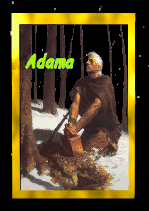
Nombre de messages : 8905
Age : 60
Localisation : Pays de Néphi - Mormon forest
Date d'inscription : 16/02/2007
Chevalier de Kolob - Vers la Sagesse
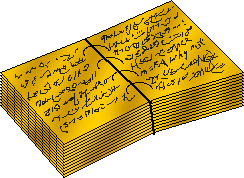 A reçu la Lumière: 180 A reçu la Lumière: 180
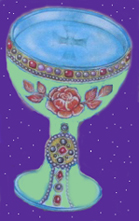 En quête du Vase Précieux et Elu: En quête du Vase Précieux et Elu:
    (150/200) (150/200)
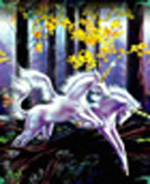 A la recherche du couple de Licornes du Jardin d'Eden: A la recherche du couple de Licornes du Jardin d'Eden:
    (7/700) (7/700)
 |  Sujet: Tunguska Event Sujet: Tunguska Event  Lun 30 Juin - 0:23 Lun 30 Juin - 0:23 | |
| Tunguska Event    The Tunguska Event, sometimes referred to as the Tunguska explosion, was a massive explosion that occurred near the Podkamennaya (Under Rock) Tunguska River in what is now Krasnoyarsk Krai of Russia, between 7:00 and 8:00 AM on June 30, 1908. The explosion was most likely caused by the airburst of a large (around 20 m (66 ft) across) meteoroid or comet fragment at an altitude of 5 to 10 kilometers (3-6 mi) above the Earth's surface. Although the meteor or comet is considered to have burst prior to hitting the surface, this event is still referred to as an impact event. The energy of the blast was estimated to be between 10 and 20 megatons of TNT, 1,000 times more powerful than the bomb dropped on Hiroshima, or equivalent to Castle Bravo, the most powerful nuclear bomb ever detonated by the US. The Tunguska explosion felled an estimated 80 million trees over 2,150 square kilometers (830 sq mi). An overhead satellite view, from nearly a century later, centered at 60°55 N, 101°57 E (near ground zero for this event) shows an area of reduced forest density with a clearly visible, irregular clearing of somewhat less than one square kilometer in area. It is estimated to have measured 5.0 on the Richter scale. The Tunguska event is the largest impact event in recent history. An explosion of this magnitude had the potential to devastate large metropolitan areas should it occur over a large city. This has helped spark discussion of ways to potentially stop large asteroids or comets from hitting Earth. DescriptionAt around 7:15 a.m., Tungus natives and Russian settlers in the hills northwest of Lake Baikal observed a column of bluish light, nearly as bright as the Sun, moving across the sky. About 10 minutes later, there was a flash and a loud "knocking" sound similar to artillery fire that went in short bursts spaced increasingly wider apart. Eyewitnesses closer to the explosion reported the sound source moving during each barrage, east to north. The sounds were accompanied by a shock wave that knocked people off their feet and broke windows hundreds of miles away. The majority of eyewitnesses reported only the sounds and the tremors, and not the sighting of the explosion. Eyewitness accounts differ as to the sequence of events and their overall duration. The explosion registered on seismic stations across Eurasia. Although the Richter scale was not developed until 1935, it has been estimated that in some places the shock wave would have been equivalent to an earthquake of 5.0 on the Richter scale. It also produced fluctuations in atmospheric pressure strong enough to be detected by then recently invented barographs in Britain. Over the next few weeks, night skies were aglow such that one could read in their light, sometimes called "bright nights." In the United States, the Smithsonian Astrophysical Observatory and the Mount Wilson Observatory observed a decrease in atmospheric transparency that lasted for several months. The Guinness Book of World Records (1966 edition) states that due to the rotation of the Earth, if the collision had occurred 4 hours 47 minutes later, it would have completely destroyed the city of St. Petersburg. Selected Eyewitness Reports
- Testimony of S. Semenov, as recorded by Leonid Kulik's expedition in 1930.
"At breakfast time I was sitting by the house at Vanavara trading post (65 kilometres/40 miles south of the explosion), facing North. [...] I suddenly saw that directly to the North, over Onkoul's Tunguska road, the sky split in two and fire appeared high and wide over the forest (as Semenov showed, about 50 degrees up - expedition note). The split in the sky grew larger, and the entire Northern side was covered with fire. At that moment I became so hot that I couldn't bear it, as if my shirt was on fire; from the northern side, where the fire was, came strong heat. I wanted to tear off my shirt and throw it down, but then the sky shut closed, and a strong thump sounded, and I was thrown a few yards. I lost my senses for a moment, but then my wife ran out and led me to the house. After that such noise came, as if rocks were falling or cannons were firing, the earth shook, and when I was on the ground, I pressed my head down, fearing rocks would smash it. When the sky opened up, hot wind raced between the houses, like from cannons, which left traces in the ground like pathways, and it damaged some crops. Later we saw that many windows were shattered, and in the barn a part of the iron lock snapped."
- Testimony of Chuchan of Shanyagir tribe, as recorded by I.M.Suslov in 1926.
"We had a hut by the river with my brother Chekaren. We were sleeping. Suddenly we both woke up at the same time. Somebody shoved us. We heard whistling and felt strong wind. Chekaren said, 'Can you hear all those birds flying overhead?' We were both in the hut, couldn't see what was going on outside. Suddenly, I got shoved again, this time so hard I fell into the fire. I got scared. Chekaren got scared too. We started crying out for father, mother, brother, but no one answered. There was noise beyond the hut, we could hear trees falling down. Me and Chekaren got out of our sleeping bags and wanted to run out, but then the thunder struck. This was the first thunder. The Earth began to move and rock, wind hit our hut and knocked it over. My body was pushed down by sticks, but my head was in the clear. Then I saw a wonder: trees were falling, the branches were on fire, it became mighty bright, how can I say this, as if there was a second sun, my eyes were hurting, I even closed them. It was like what the Russians call lightning. And immediately there was a loud thunderclap. This was the second thunder. The morning was sunny, there were no clouds, our Sun was shining brightly as usual, and suddenly there came a second one!
"Me and Chekaren had some difficulty getting under from the remains of our hut. Then we saw that above, but in a different place, there was another flash, and loud thunder came. This was the third thunder strike. Wind came again, knocked us off our feet, struck against the fallen trees.
"We looked at the fallen trees, watched the tree tops get snapped off, watched the fires. Suddenly Chekaren yelled 'Look up' and pointed with his hand. I looked there and saw another flash, and it made another thunder. But the noise was less than before. This was the fourth strike, like normal thunder.
"Now I remember well there was also one more thunder strike, but it was small, and somewhere far away, where the Sun goes to sleep."
- Sibir newspaper, July 2, 1908
"On the 17th of June, around 9 in the AM, we observed an unusual natural occurrence. In the N Karelinski village (200 verst N of Kirensk) the peasants saw to the North-West, rather high above the horizon, some strangely bright (impossible to look at) bluish-white heavenly body, which for 10 minutes moved downwards. The body appeared as a "pipe", i.e. a cylinder. The sky was cloudless, only a small dark cloud was observed in the general direction of the bright body. It was hot and dry. As the body neared the ground (forest), the bright body seemed to smudge, and then turned into a giant billow of black smoke, and a loud knocking (not thunder) was heard, as if large stones were falling, or artillery was fired. All buildings shook. At the same time the cloud began emitting flames of uncertain shapes. All villagers were stricken with panic and took to the streets, women cried, thinking it was the end of the world. "The author of these lines was meantime in the forest about 6 verst N of Kirensk, and heard to the NE some kind of artillery barrage, that repeated in intervals of 15 minutes at least 10 times. In Kirensk in a few buildings in the walls facing north-east window glass shook."
- Siberian Life newspaper, July 27, 1908
"When the meteorite fell, strong tremors in the ground were observed, and near the Lovat village of the Kansk uezd two strong explosions were heard, as if from large-caliber artillery."
- Krasnoyaretz newspaper, July 13, 1908
"Kezhemskoe village. On the 17th an unusual atmospheric event was observed. At 7:43 the noise akin to a strong wind was heard. Immediately afterwards a horrific thump sounded, followed by an earthquake which literally shook the buildings, as if they were hit by a large log or a heavy rock. The first thump was followed by a second, and then a third. Then - the interval between the first and the third thumps were accompanied by an unusual underground rattle, similar to a railway upon which dozens of trains are traveling at the same time. Afterwards for 5 to 6 minutes an exact likeness of artillery fire was heard: 50 to 60 salvoes in short, equal intervals, which got progressively weaker. After 1.5 - 2 minutes after one of the "barrages" six more thumps were heard, like cannon firing, but individual, loud, and accompanied by tremors. "The sky, at the first sight, appeared to be clear. There was no wind and no clouds. However upon closer inspection to the North, i.e. where most of the thumps were heard, a kind of an ashen cloud was seen near the horizon which kept getting smaller and more transparent, and possibly by around 2-3 p.m. completely disappeared."
| |
|   | | Commandeur Adama
Magister Ordo Kolob - Admin

Nombre de messages : 8905
Age : 60
Localisation : Pays de Néphi - Mormon forest
Date d'inscription : 16/02/2007
Chevalier de Kolob - Vers la Sagesse
 A reçu la Lumière: 180 A reçu la Lumière: 180
 En quête du Vase Précieux et Elu: En quête du Vase Précieux et Elu:
    (150/200) (150/200)
 A la recherche du couple de Licornes du Jardin d'Eden: A la recherche du couple de Licornes du Jardin d'Eden:
    (7/700) (7/700)
 |  Sujet: Re: Tunguska Event Sujet: Re: Tunguska Event  Lun 30 Juin - 0:23 Lun 30 Juin - 0:23 | |
| HistoryThere was little scientific curiosity about the impact at the time, possibly owing to the isolation of the Tunguska region. If there were any early expeditions to the site, the records were lost during the subsequent chaotic years - World War I, the Russian Revolution of 1917, and the Russian Civil War. The first recorded expedition arrived at the scene more than a decade after the event. In 1921, the Russian mineralogist Leonid Kulik, visiting the Podkamennaya Tunguska River basin as part of a survey for the Soviet Academy of Sciences, deduced from local accounts that the explosion had been caused by a giant meteorite impact. He persuaded the Soviet government to fund an expedition to the Tunguska region, based on the prospect of meteoritic iron that could be salvaged to aid Soviet industry.  Kulik's party reached the site in 1927. To their surprise, no crater was to be found. There was instead a region of scorched trees about 50 kilometres (30 mi) across. A few near ground zero were still strangely standing upright, their branches and bark stripped off. Those farther away had been knocked down in a direction away from the center. During the next ten years there were three more expeditions to the area. Kulik found a little "pothole" bog that he thought might be the crater, but after a laborious exercise in draining the bog, he found there were old stumps on the bottom, ruling out the possibility that it was a crater. In 1938, Kulik managed to arrange for an aerial photographic survey of the area, which revealed that the event had knocked over trees in a huge butterfly-shaped pattern. Despite the large amount of devastation, there was no crater to be seen. Expeditions sent to the area in the 1950s and 1960s found microscopic glass spheres in siftings of the soil. Chemical analysis showed that the spheres contained high proportions of nickel and iridium, which are found in high concentrations in meteorites, hinting that they were of extraterrestrial origin. Detailed systematic eyewitness reports began to be gathered as late as 1959, when interviews were conducted with many of the indigenous people who had been within 100 kilometres (60 mi) of the explosion. Most of these accounts claimed that the local people had been covered with boils after the explosion, with whole families dying off. The medical scientists attached to the expedition concluded that there had been an epidemic of smallpox in the area at the time. Expeditions led by Gennady Plekhanov found no elevated levels of radiation, which would have been expected had the detonation been nuclear in nature. Earth ImpactorMeteoroid Airburst In scientific circles, the leading explanation for the explosion is the airburst of a meteoroid 6 to 10 kilometers (4-6 mi) above the Earth's surface. Meteoroids enter the Earth's atmosphere from outer space every day, usually travelling at a speed of more than 10 kilometers per second (6 mi/sec). Most are small but occasionally a larger one enters from space. The heat generated by compression of air in front of the body (ram pressure) as it travels through the atmosphere is immense and most meteoroids burn up or explode before they reach the ground. Starting from the second half of the 20th century, close monitoring of the Earth's atmosphere has led to the discovery that such meteoroid airbursts occur rather frequently. A stony meteoroid of about 10 meters (30 ft) in diameter can produce an explosion of around 20 kilotons, similar to that of the Little Boy bomb dropped on Hiroshima, and data released by the U.S. Air Force's Defense Support Program indicate that such explosions occur high in the upper atmosphere more than once a year. Tunguska-like megaton-range events are much more rare. Eugene Shoemaker estimated that such events occur about once every 300 years. Blast Patterns The curious effect of the Tunguska explosion on the trees near ground zero was replicated during atmospheric nuclear tests in the 1950s and 1960s. These effects are caused by the shock wave produced by large explosions. The trees directly below the explosion are stripped as the blast wave moves vertically downward, while trees further away are felled because the blast wave is travelling closer to the horizontal when it reaches them. Soviet experiments performed in the mid-1960s, with model forests (made of matches) and small explosive charges slid downward on wires, produced butterfly-shaped blast patterns strikingly similar to the pattern found at the Tunguska site. The experiments suggested that the object had approached at an angle of roughly 30 degrees from the ground and 115 degrees from north and had exploded in mid-air. Asteroid or Comet? The composition of the Tunguska body remains a matter of controversy. In 1930, the British astronomer F.J.W. Whipple suggested that the Tunguska body was a small comet. A cometary meteorite, being composed primarily of ice and dust, could have been completely vaporized by the impact with the Earth's atmosphere, leaving no obvious traces. The comet hypothesis was further supported by the glowing skies (or "skyglows" or "bright nights") observed across Europe for several evenings after the impact, apparently caused by dust that had been dispersed across the upper atmosphere. In 1978, Slovak astronomer Lubor Kresak suggested that the body was a piece of the short-period Comet Encke, which is responsible for the Beta Taurid meteor shower; the Tunguska event coincided with a peak in that shower. It is now known that bodies of this kind explode at frequent intervals tens to hundreds of kilometres above the ground. Military satellites have been observing these explosions for decades. In 1983, astronomer Zdenek Sekanina published a paper criticizing the comet hypothesis. He pointed out that a body composed of cometary material, travelling through the atmosphere along such a shallow trajectory, ought to have disintegrated, whereas the Tunguska body apparently remained intact into the lower atmosphere. Sekanina argued that the evidence pointed to a dense, rocky object, probably of asteroidal origin. This hypothesis was further boosted in 2001, when Farinella, Foschini, et al. released a study suggesting that the object had arrived from the direction of the asteroid belt. Proponents of the comet hypothesis have suggested that the object was an extinct comet with a stony mantle that allowed it to penetrate the atmosphere. The chief difficulty in the asteroid hypothesis is that a stony object should have produced a large crater where it struck the ground, but no such crater has been found. It has been hypothesized that the passage of the asteroid through the atmosphere caused pressures and temperatures to build up to a point where the asteroid abruptly disintegrated in a huge explosion. The destruction would have to have been so complete that no remnants of substantial size survived, and the material scattered into the upper atmosphere during the explosion would have caused the skyglows. Models published in 1993 suggested that the stony body would have been about 60 metres across, with physical properties somewhere between an ordinary chondrite and a carbonaceous chondrite. Christopher Chyba and others have proposed a process whereby a stony meteorite could have exhibited the behavior of the Tunguska impactor. Their models show that when the forces opposing a body's descent become greater than the cohesive force holding it together, it blows apart, releasing nearly all its energy at once. The result is no crater, and damage distributed over a fairly wide radius, all of the damage being blast and thermal. High levels of carbon that doesn't form on Earth found in peat bogs suggest a comet, which have high amounts of carbon compared to most asteroids, was the cause of the Tunguska event; however, it is not impossible for asteroids to contain the carbon necessary to result in the heightened levels of carbon in the peat bogs in 1908. During the 1990s, Italian researchers extracted resin from the core of the trees in the area of impact, to examine trapped particles that were present during the 1908 event. They found high levels material commonly found in rocky asteroids and rarely found in comets. Today, most Russian scientists believe the Tunguska event was the result of a comet, while most American scientists take the belief that it was some sort of asteroid. Lake Cheko 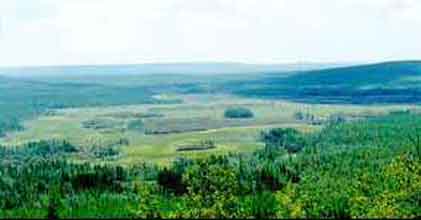 In June of 2007 it was announced that scientists from the University of Bologna had identified a lake in the Tunguska region as a possible impact crater from the event. Lake Cheko is a small bowl shaped lake approximately 8 kilometers north-north-west of the epicenter. The hypothesis has been challenged by other impact crater specialists. A 1961 investigation had dismissed a modern origin of Lake Cheko, saying that the presence of meters thick silt deposits at the lake's bed suggests an age of at least 5000 years. Speculative HypothesesScientific understanding of the behaviour of meteorites in the Earth's atmosphere was much sparser during the early decades of the 20th century. Due to this lack of knowledge, as well as a paucity of scientific data about Tunguska due to Soviet secrecy during the Cold War, a great many other hypotheses for the Tunguska event have sprung up, with varying degrees of credibility. Perhaps the earliest widely-held theory for the Tunguska explosion was that the world was about to end. As the minutes passed, this theory was dropped in favour of other, less final theories, until today one is hard-pressed to find anyone who truly believes the world ended on the morning of 30 June 1908...
Natural H-bomb In 1989, the astronomers D'Alessio and Harms suggested that some of the deuterium in a comet entering the Earth's atmosphere may have undergone a nuclear fusion reaction, leaving a distinctive signature in form of carbon-14. They concluded that the release of nuclear energy may have been almost negligible. Independently, in 1990, César Sirvent proposed that a deuterium comet, i.e., a comet with an anomalous high concentration of deuterium into its composition, may have exploded as a natural hydrogen bomb, generating most of the energy released. The sequence would be first a mechanical or kinetic explosion, and instants later a thermonuclear reaction generated by this first explosion. This hypothesis would explain the inconsistences related to an unusual high ratio of electromagnetic energy / kinetic energy and cited in the famous paper by Cowan, Atluri, and Libby published in Nature. It is, however, inconsistent with knowledge both of the composition of comets and of the temperature and pressure conditions necessary for initiating a nuclear fusion reaction. Black Hole In 1973, Albert A. Jackson IV and Michael P. Ryan, Jr., physicists at the University of Texas, proposed that the Tunguska event was caused by a "small" (around 1020 g to 1022 g) black hole passing through the Earth. Unfortunately for this hypothesis, there is no evidence for a second explosion occurring as the black hole exited the Earth and it has not gained wide acceptance. Furthermore, Stephen Hawking's subsequent hypothesis that black holes radiate energy via Hawking radiation indicates that such a small black hole would have evaporated away long before it could encounter the Earth. Antimatter In 1965, Cowan, Atluri, and Libby suggested that the Tunguska event was caused by the annihilation of a chunk of antimatter falling from space. However, as with the other hypotheses described in this section, this does not account for the mineral debris left in the area of the explosion. Furthermore, there is no astronomical evidence for the existence of such chunks of antimatter in our region of the universe. If such objects existed, they should be constantly producing energetic gamma rays due to annihilation against the interstellar medium, but such gamma rays have not been observed. Tunguska Event Wikipedia | |
|   | | Commandeur Adama
Magister Ordo Kolob - Admin

Nombre de messages : 8905
Age : 60
Localisation : Pays de Néphi - Mormon forest
Date d'inscription : 16/02/2007
Chevalier de Kolob - Vers la Sagesse
 A reçu la Lumière: 180 A reçu la Lumière: 180
 En quête du Vase Précieux et Elu: En quête du Vase Précieux et Elu:
    (150/200) (150/200)
 A la recherche du couple de Licornes du Jardin d'Eden: A la recherche du couple de Licornes du Jardin d'Eden:
    (7/700) (7/700)
 |  Sujet: Re: Tunguska Event Sujet: Re: Tunguska Event  Lun 30 Juin - 0:24 Lun 30 Juin - 0:24 | |
| UFO TheoriesUFO aficionados have long claimed that the Tunguska event is the result of an exploding alien spaceship or even an alien weapon going off to "save the Earth from an imminent threat". This hypothesis appears to originate from a science fiction story penned by Soviet engineer Alexander Kazantsev in 1946, in which a nuclear-powered Martian spaceship, seeking fresh water from Lake Baikal, blew up in mid-air. This story was inspired by Kazantsev's visit to Hiroshima in late 1945. Many events in Kazantsev's tale were subsequently confused with the actual occurrences at Tunguska. The nuclear-powered UFO hypothesis was adopted by TV drama critics Thomas Atkins and John Baxter in their book The Fire Came By (1976). The 1998 television series The Secret KGB UFO Files (Phenomenon: The Lost Archives), broadcast on Turner Network Television, referred to the Tunguska event as "the Russian Roswell" and claimed that crashed UFO debris had been recovered from the site. In 2004, a group from the Tunguska Space Phenomenon Public State Fund claimed to have found the wreck of an alien spacecraft at the site. The proponents of the UFO hypothesis have never been able to provide any significant evidence for their claims. It should be noted that the Tunguska site is downrange from the Baikonur Cosmodrome and has been contaminated repeatedly by Russian space debris, most notably by the failed launch of the fifth Vostok test flight on December 22, 1960. The payload landed close to the Tunguska impact site, and a team of engineers was dispatched there to recover the capsule and its two canine passengers (which survived). Tunguska Event UFO Crash Wikipedia Researchers say Tunguska Event was a UFO Crash: Debris of Alien Spaceship found PhysOrg - August 10, 2004 The Tunguska Event - Siberia, 1908 UFO Evidence - Various Articles Tunguska event could be a UFO crash Pravda - September 22, 2006 In the News ... Tunguska: The Largest Recent Impact Event NASA - November 14, 2007 Crater From 1908 Russian Space Impact Found, Team Says National Geographic - November 8, 2007 New Tunguska Crater Found? Thunderbolts - July 5, 2007  Reference : http://www.crystalinks.com/tunguskaevent.html | |
|   | | Contenu sponsorisé
 |  Sujet: Re: Tunguska Event Sujet: Re: Tunguska Event  | |
| |
|   | | | | Tunguska Event |  |
|
| | Permission de ce forum: | Vous ne pouvez pas répondre aux sujets dans ce forum
| |
| |
| |
|

